Japan is the trickiest country for dining I’ve ever visited. With a cuisine so different from our own, and menus written in an alien alphabet, it would be so easy to order the boiled pig’s rectum without ever realising it! Of course, on the other hand, said rectum would probably taste delicious and leave you wishing you could find it back home.
I enjoyed almost everything I ate in Japan. And there’s so much to choose from. If you imagine that you “know” Japanese cuisine because you’ve been to a half-dozen different Japanese restaurants in England, think again. The equivalent would perhaps be to visit a half-dozen pizzerias and imagine you know Italian cuisine.
There is one bit of serendipity in the history of Japanese cuisine that makes life slightly easier on the bemused western visitor: plastic food. They’ve been displaying realistic plastic replicas of the menu outside restaurants for more than 70 years, astonishingly realistic copies, and those restaurants that don’t want to splash out on plastic food make do with photographs. Pretty much everywhere else in the world a menu that includes photographs of the food would be the lowest possible form of tourist-fodder. Here in Japan there’s absolutely no stigma attached and at least with pictures of the food you might be able to guess at what you’re ordering.
There’s no plastic food at the really high-end restaurants, of course. But then again, they aren’t exactly looking for random tourist trade anyway. What you would typically see of a high-end Japanese restaurant from the street is: (1) a simple door, much like any other front door along the road, (2) a discrete sign with some Japanese characters (which might read “Restaurant Chihana” or perhaps “Kawasaki Secretarial Services” for all you’d know!), (3) and that’s it, no other hint that it’s even a place to eat. You’re welcome to try just ducking through a doorway at random – but only if you don’t mind the embarassment of finding yourself in a massage parlour rather than a dining room.
Still, the adventurous foodie has plenty to explore without going high-end.
Oh, but there is just one more thing that might trip you up. The Japanese need to serve you exactly what you ordered. Forget any notions of using sign language to indicate that you’ll eat whatever the chef recommends, or that you’d like the daily special. In our experience the staff weren’t happy at all until they’d extracted from us exactly what we wanted off the menu and how many of them we’d like. Essentially, they don’t want to make a mistake, and that’s very laudable but a bit frustrating at times! My favourite example wasn’t food-related at all, but a hair straightener that Maureen needed to buy at an electronics shop. There was a long and painful pantomime at the cash desk, with three staff involved and bemusement on all sides, until we finally worked out that they were only trying to ask us how many hair straighteners we wanted. Er. One? Do Japanese women often bulk-buy these things? Organising themselves into some kind of beauty co-operative?
So challenges aside, what kind of memorable meals did we find in Japan?
Kyoto Mame HachiThis place was a good find early on, one of about a thousand restaurants on Pontocho street. Here we sat at the counter while the chef served us a series of delicious treats, many of them including tofu – a Kyoto speciality. The last course was sweetened tofu, which ate like an exceptionally good panacotta and was dusted with sweet matcha green tea powder. Aoyagi
Another good restaurant, this time in Kumamoto, where we had a private booth and charming service by the two young waiters left to deal with the tourists (being a provincial city, we found even less English spoken in Kumamoto than Kyoto!). This was our first chance to try horsemeat sashimi, and the selection included liver and “mane fat” – neither of which are anywhere near as good as the excellent taste and texture of the lean horsemeat. The rest of the meal was delicious too. Kumamoto street food
As we were lucky enough to be in Kumamoto for their annual festival of lights, we got to wander around grabbing snacks and nibbles from all kinds of food stalls. I saw the magic of tako-yaki being made; three guys with nothing but long pins, turning a load of octopus-chunk laden batter into beautiful round balls – they were delicious mouthfuls, still piping hot. We also had generous cups of local sake, an amazing spicy beef stirfry, and some very powerful sea urchin and potato croquettes. Iwaso
Iwaso is a famous old ryokan on the island of Miyajima, and the classic way to stay in a ryokan is to have a complex kaiseki meal served in your room (or since there were four of us, in a private dining room). The meal was intricate and delicious, including some huge local oysters, and even more fun for eating it in our yukata – essentially our dressing gowns, which we were allowed to wear around the hotel and indeed out on the island. Soba noodles
We enjoyed soba in their simplest form in an old building in Narai. They come cold, and are simply dipped in a light soy broth before slurping up. Absolutely great for concentrating on the perfect texture and the toasty buckwheat taste of the noodles. At the table next door two elegant ladies were slurping up their noodles with a fiercely loud and almost industrial zeal. Ryu Sushi at Tsujiki Market
We ate so much amazing seafood in Japan, and a lot of it passes through the gigantic and still very traditional Tsujiki fish market in Tokyo. A sushi breakfast here is one of the tourist highlights on a trip to the city, but rather than queue at one of the two or three most famous little eateries we took a blog tip and picked Ryu Sushi. Best. Sushi. Ever. But while I’m on the subject of seafood: over two weeks in Japan I ate seafood every day, much of it raw, and loads of it shellfish – about a ton of prawns at Kondo. So why is it that when I eat shellfish at even good restaurants in the UK I have something like a 50/50 chance of a dodgy stomach? But I never felt better over two weeks of gorging on seafood in Japan? Mystery. Okonomiyaki
This is slutty stuff; the Japanese equivalent of a fat burger in a brioche bun with bacon, barbecue sauce and melted jack cheese. It’s kind of like a pancake covered with oodles of stuff which is all fried and cooked and covered with more pancakey eggy stuff and drizzled with a tangy sauce. It’s served on a hotplate at your table so it’s piping hot while you muck about chopping bits off to gobble down. Both times we had it, mine contained a mixture of cabbage, spring onion and beef tendon – which is sticky and delicious.
There was lots more besides! Not least of which, our two Michelin-starred treats; the kaiseki restaurant Chihana in Kyoto, and tempura restaurant Kondo in Tokyo. Both were fantastic meals, but I think I’ll probably remember some of our lower-key treats for longer. I don’t think there’s any more interesting destination for an adventurous foodie than Japan: everything is strange, but at the same time everything is delicious. Where else in the world can you say that?


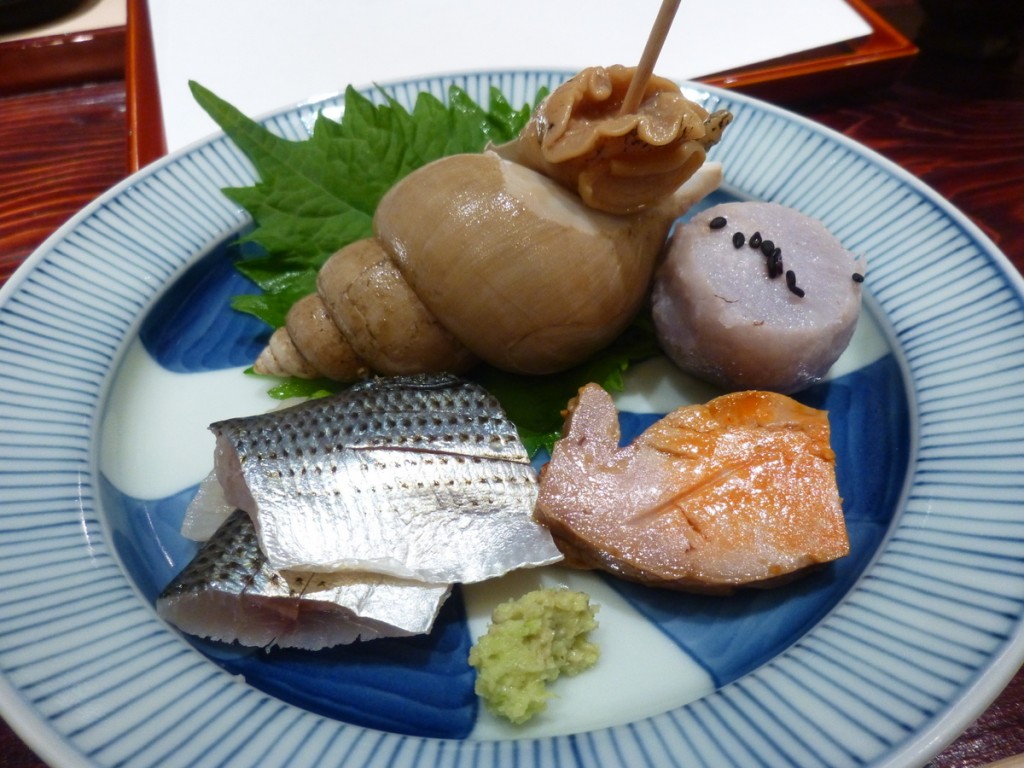
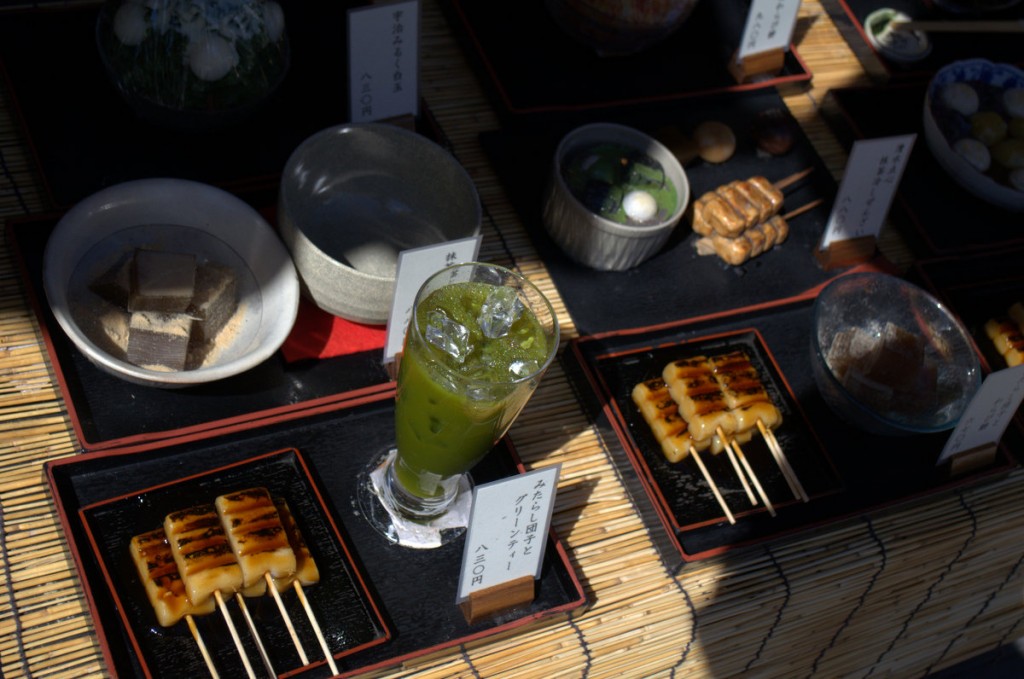
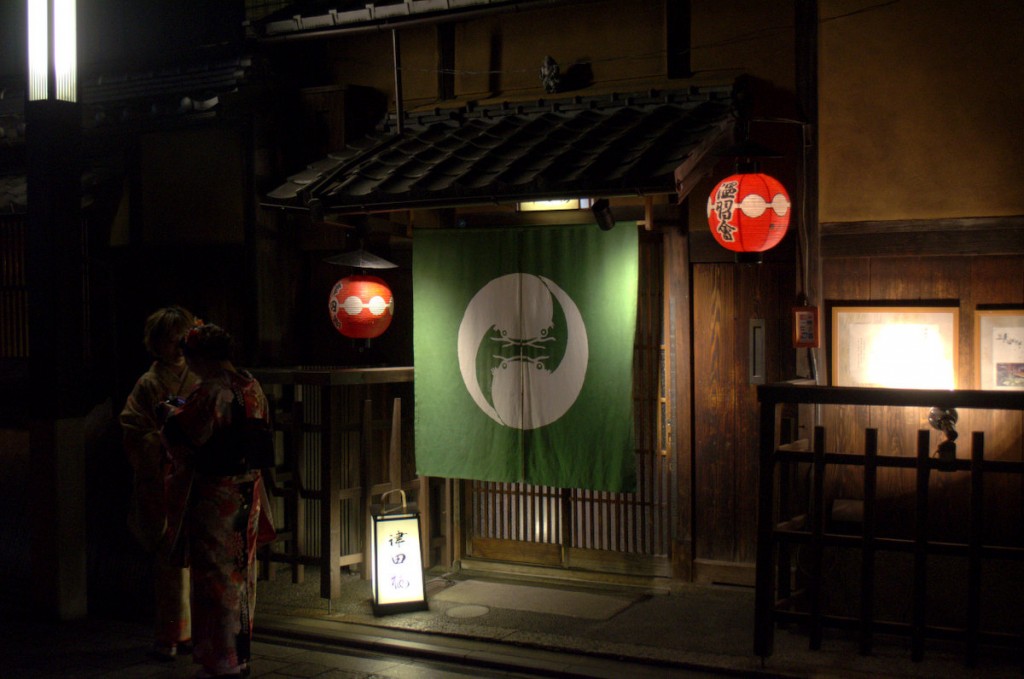
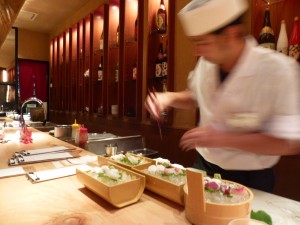
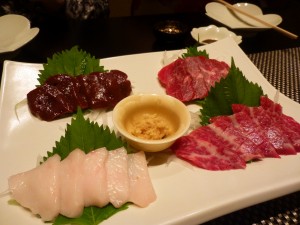
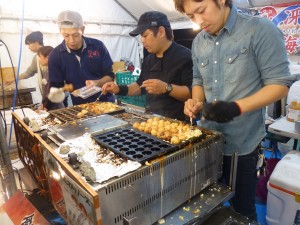
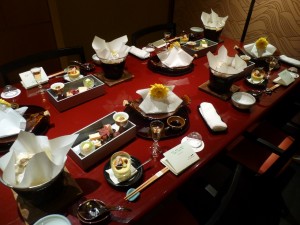
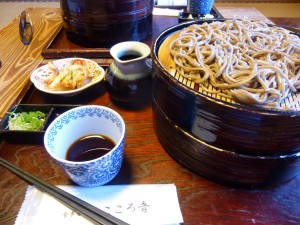
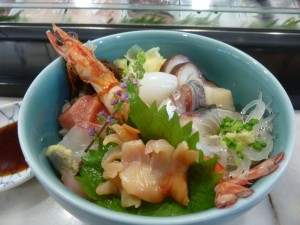
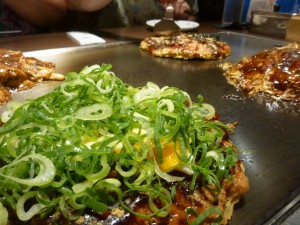
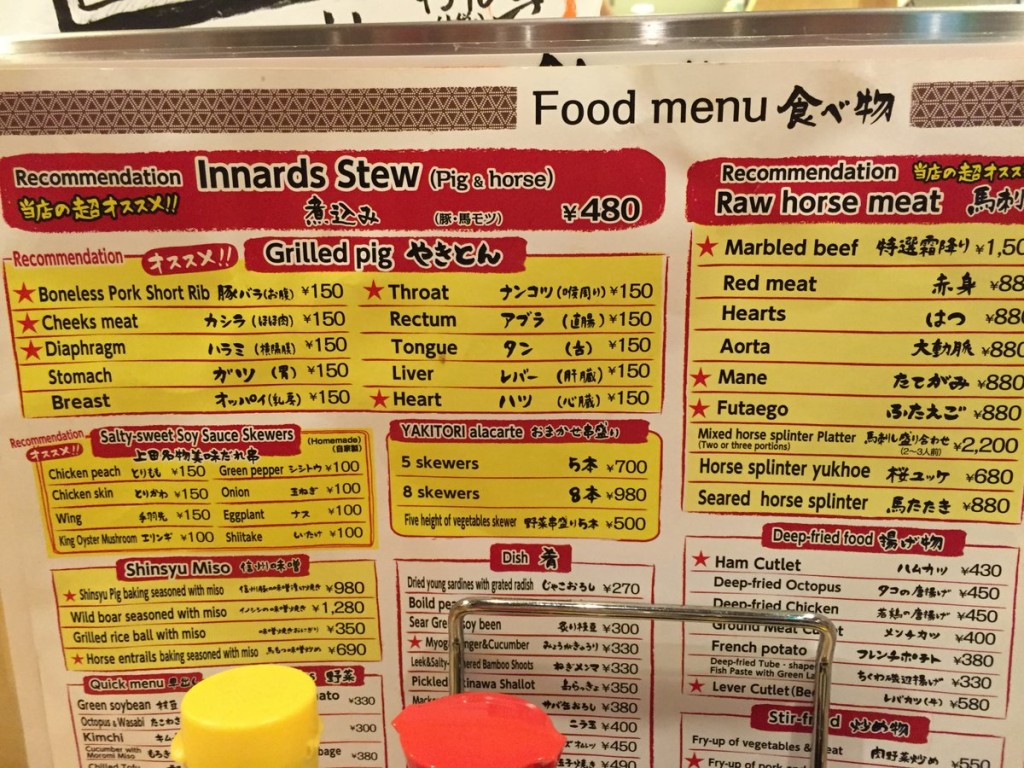
1 ping
Salty plums : Fine dining, London, Michelin, Restaurant Reviews : Review: The Clove Club, Shoreditch
27 October 2016 at 3:55 pm (UTC 0) Link to this comment
[…] simply served with mustard mayo and cucumber. This was as good a piece of sashimi as we had through two weeks in Japan, with jewel-like […]